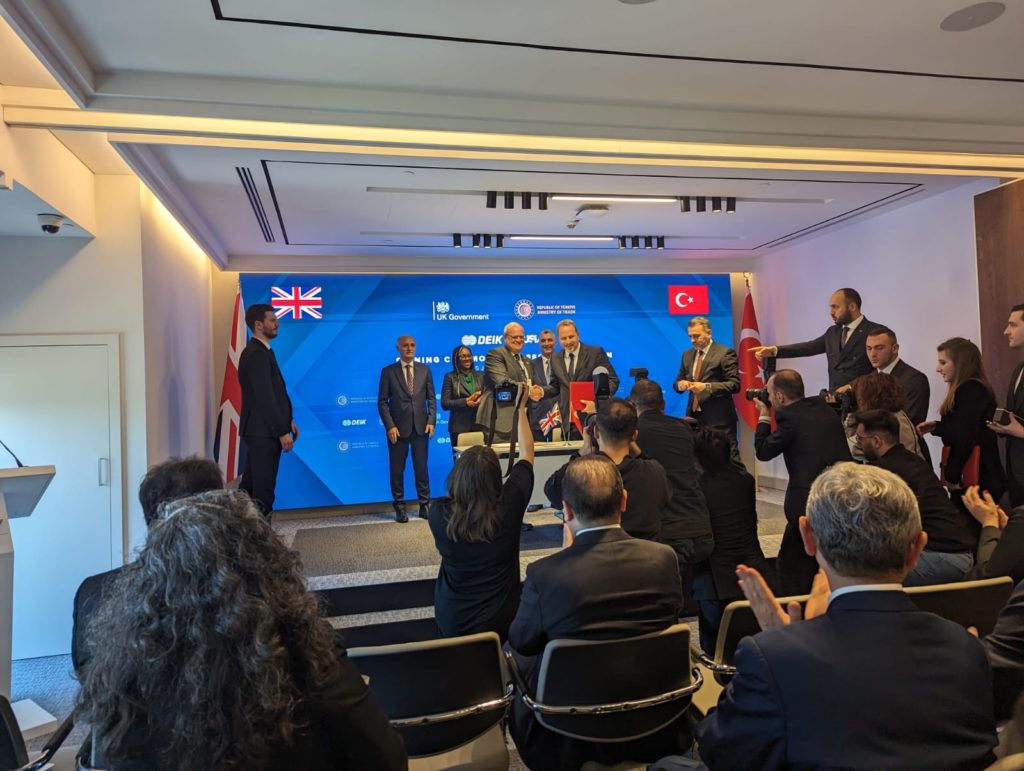1. Soaring High: Nigeria’s Strategic Moves to Attract Foreign Direct Investment in Aviation
In the dynamic landscape of global economics, Nigeria is emerging as a promising pole of growth. With its rich natural resources and low cost of labour, the country has become the third host economy for Foreign Direct Investment (FDI) in Africa, behind Egypt and Ethiopia. In 2021, FDI flows to Nigeria totalled USD 4.8 billion, more than doubling from the previous year. Despite the challenges of widespread corruption, political instability, and infrastructural issues, Nigeria has shown a remarkable resilience and adaptability.
The recent efforts by the Nigerian government to merge trade, industry, and investment under the ambit of the Federal Ministry of Industry, Trade and Investment reflect a strategic move to improve its trading and investment environment. This initiative, coupled with the country’s intention to diversify its economy away from oil by building a competitive manufacturing sector, has piqued the interest of foreign investors.
However, attracting FDI is only half the battle. The real challenge lies in sustaining this momentum and transforming it into long-term growth. This article explores the latest updates from Nigeria in its quest to attract and retain foreign direct investment, and the implications these developments have for the global investment community.
Aviation
The Nigerian government has been making significant strides to attract Foreign Direct Investment (FDI) into its aviation sector.
The Minister of Aviation and Aerospace Development, Festus Keyamo, recently announced plans to capitalize on the numerous aviation opportunities in the country to attract more FDIs. This was disclosed at an inauguration/induction for the newly appointed CEOs and directors of aviation agencies.
Keyamo emphasized a five-point agenda for the growth of the Nigerian aviation value chain. The Aviation Ministry is looking forward to a new phase of partnership and collaboration, leveraging the immense opportunities in the sector to attract FDI and joint venture partnerships with heads of international economic organizations, presidents of transnational corporations, and principles of leading privately owned enterprises.
The newly appointed CEOs of aviation agencies have been tasked with prioritizing transparency and efficiency. They play a critical role in ensuring a smooth and reliable aviation system that meets international standards.
In addition, the Infrastructure Concession and Regulatory Commission (ICRC) and the Ministry of Aviation have focused on funding the country’s air infrastructure. The government has approved the concession of some of the nation’s airports and has invited private sector stakeholders to bid.
These efforts reflect Nigeria’s commitment to optimizing and boosting revenue generation for the country’s aviation sector and ensuring strict compliance with international regulations and standards. The ultimate goal is to build a safe, secure, and efficient aviation industry that makes Nigeria a hub meeting international standards and best practices for the African continent.
Challenges
Nigeria’s aviation sector, while promising, faces several challenges that need to be addressed:
- Inadequate Infrastructure: The infrastructure of Nigeria’s aviation sector is not up to par with international standards.
- Financial Instability: The sector is grappling with financial challenges, exacerbated by high taxes and charges.
- Scarcity of Foreign Exchange: The scarcity of foreign exchange has led to further depreciation of the naira, impacting the operations of many airlines.
- High Operational Costs: Airlines are struggling with operating costs such as taxes, surcharges, and maintenance costs.
- Aviation Fuel Scarcity and Cost: The aviation fuel crisis has threatened the ability of airlines to continue operations, with the price of JetA1 rising significantly.
- Slow Renewal of Air Operating Certificate: The slow process of renewing the Air Operating Certificate has affected the operations of airlines.
- Political Interference and Regulatory Obstacles: The sector continues to battle with political interference and regulatory obstacles.
- Safety and Security Issues: Safety issues, security threats, and long processing hours, especially on Immigration and State Security Service (SSS), have been noted.
Addressing these challenges is crucial for the growth and development of Nigeria’s aviation industry.
Steps taken
The Nigerian government is taking several steps to address the challenges in the aviation sector:
- Policy Reforms: Stakeholders in the aviation industry are convinced that if the right policies are put in place to address growth challenges, the aviation industry will double its current workforce, generate more businesses and up the country’s GDP.
- Infrastructure Upgrades: The government is looking at upgrading the Cat 3 landing system at major airports, constructing a second runway in Abuja, and implementing airport improvement programmes through concession.
- Regulatory Changes: The Civil Aviation Act 2022 was enacted, repealing the Civil Aviation Act of 2006 and introducing significant changes to the Nigerian aviation industry. The new Act has broadened the scope of the Nigeria Civil Aviation Authority (NCAA), solidifying its autonomy and granting it extensive powers.
- Financial Reforms: The government is addressing the financial challenges by calling for urgent reforms and questioning the exorbitant charges and trapped foreign airlines revenues.
- Collaboration with Stakeholders: The government is willing to partner with companies to turn major airports into Aerotropolis.
These efforts are aimed at making Nigeria’s aviation sector more attractive to foreign investors and ensuring its growth and development.
2. Trade Winds: The UK and Turkey’s Strategic Moves Towards a Prosperous Partnership

IoD International Trade Group with Minister for Trade in Turkey
In the ever-evolving global economic landscape, the United Kingdom is making strategic moves to strengthen its trade ties. Recently, the UK’s Business and Trade Secretary, Kemi Badenoch, embarked on a significant visit to Turkey. This visit aimed to bolster the thriving trading relationship between the two nations, which saw trade up more than 17% to £26.2 billion in the year to June 2023.
Badenoch’s visit to Istanbul marked the beginning of a year focused on boosting services trade. The two countries have an existing trade deal covering goods but not services, digital, or data – three key components of 21st-century trade. The Secretary of State met her Turkish counterpart, Minister for Trade Ömer Bolat, to discuss how to enhance UK-Turkish trade ahead of the launch of talks on an upgraded trade deal covering services and digital later in the year.
This article delves into the details of this pivotal visit, the discussions held, the potential implications for both countries, and the future of UK-Turkish trade relations. Join us as we unpack the strategic manoeuvres of the UK’s Business and Trade Secretary in Turkey and what it means for the global investment community.
IoD International Trade Group was present at the summit and signed a trade cooperation agreement with DEIK the economic trade organisation of Turkey.
Strategic plans
The UK and Turkey have made several strategic plans to increase trade between the two nations:
- Negotiating a New Trade Deal: The UK and Turkey have announced plans to begin talks on an updated free trade agreement (FTA). The new deal would replace the existing UK-Turkey FTA, which was rolled over from when the UK left the European Union and doesn’t cover key areas of the UK economy like services, digital, and data.
- Boosting Services Trade: The UK is the second biggest services exporter in the world. A new deal could boost trade and help UK companies maximise opportunities in this area, driving economic growth.
- Deepening Trade Relationship: The UK Business and Trade Secretary Kemi Badenoch and Turkish Minister for Trade Ömer Bolat have committed to negotiating a new deal and deepening the trade relationship between the two countries.
- Renegotiation of the Free Trade Agreement: The UK-Turkey Joint Committee, consisting of the UK’s Chief Negotiator and officials from both sides, will meet to formally conclude the review of the current agreement and move towards renegotiation of the Free Trade Agreement.
- Inviting Business Expertise: The UK has launched a ‘Call for Input’ seeking views from businesses and the wider public on UK negotiation objectives for a new, modernised free trade agreement (FTA) with Turkey. This will give businesses, organisations, and individuals the opportunity to shape the UK’s negotiating aims ahead of talks.
- Focus on Digital Trade and Services: The new FTA is an opportunity to strike a 21st-century deal that is better suited to the modern economies of both the UK and Turkey, covering areas such as digital trade and services.
These plans are aimed at building on an already thriving trading relationship which reached £23.5 billion in 2022, and better supporting UK businesses exporting or looking to export to Turkey.
3. Bridging Borders: Unravelling the Impact of EVFTA on Vietnam-Czech Republic Trade Ties

Rodrigo Ardilha via Unsplash
In the intricate web of global commerce, the trade ties between Vietnam and the Czech Republic stand as a testament to the power of international cooperation. Over the years, these two nations have fostered a robust trading relationship, with two-way trade increasing at a rate of about 15% in recent years. In fact, the first visit of a Czech head of government to Vietnam marked a significant milestone in EU-Vietnam trade relations.
The Czech Republic and Vietnam consider each other as strategic markets, with the aim to reach US$1 billion in two-way trade in the near future. The trade between these two nations spans a wide range of goods, from seafood and farm produce such as coffee, tea, and pepper from Vietnam, to industrial goods, precision engineering, petrochemical equipment, and energy from the Czech Republic.
However, the journey of these two nations is not without its challenges. This article delves into the intricacies of the Vietnam-Czech Republic trade ties, exploring the opportunities, challenges, and the path forward for these two nations in the global economic landscape.
Trade
The trade between Vietnam and the Czech Republic spans a wide range of goods:
Major Exports from Vietnam to the Czech Republic:
- Machinery, equipment, tools, and instruments
- Computers, electrical products, spare parts, and components thereof
- Other means of transportation, parts, and accessories thereof
- Footwear
- Textiles and garments
- Telephones, mobile phones, and parts thereof
- Iron and steel products
- Plastic products
- Fishery products
- Handbags, purses, suitcases, headgear, and umbrellas
- Other base metals and other base metal products
- Wood and wooden products
- Pastrycooks, sweets, and cereals products
- Rubber
Major Imports from the Czech Republic to Vietnam:
- Machinery and equipment
- Mechanical products
- Chemicals
- Pharmaceuticals
- Crystal glassware
- Other machinery, equipment, tools, and spare parts
- Computers, electronic products, and components
- Products from Iron and Steel
These are the major commodities traded between the two nations, contributing to their robust trading relationship
EVFTA
The enforcement of the EU-Vietnam Free Trade Agreement (EVFTA) has had a significant impact on the trade relationship between the Czech Republic and Vietnam.
The EVFTA, which was signed on June 30, 2019, and approved by the European Parliament on February 02, 2020, is a comprehensive new generation agreement and the first EU’s FTA with a developing country like Vietnam¹. The agreement came into force in August 2020, marking a significant milestone for the trade relations between Vietnam and the European Union.
The EVFTA is expected to help increase Vietnam’s GDP by 4.6 percent and its exports to the EU by 42.7 percent by 2025. It provides almost 99 percent of the elimination of custom duties between the EU and Vietnam. This is a huge advantage compared to Vietnamese competitors such as Thailand, China.
The agreement has helped deepen and widen Vietnam’s economic integration, facilitate trade liberalisation, create new opportunities for growth and sustainable, green, and inclusive development on both sides as well as boost the realisation of environmental commitments.
For the Czech Republic, the EVFTA opens up new opportunities for trade and investment. The Vietnam-Czechia economic and trade relations hold huge potentials to grow to a new height after the trade pact took effect. The Czech Republic has backed the process of the EVFTA ratification and the Czech parliament’s approval of the EU-Vietnam Investment Protection Agreement (EVIPA) only shortly after the European Parliament (EP) ratified the EVFTA.
In conclusion, the enforcement of the EVFTA has strengthened bilateral relations between Vietnam and the EU, including the Czech Republic, and contributed to diversifying markets and export products.
4. Kazakhstan’s hard work pays off – country enters list of most attractive states for FDI

Maxx via Unsplash
In the realm of global economics, Kazakhstan stands as a beacon of success in attracting foreign direct investment (FDI). Since its independence in 1991, Kazakhstan has drawn in more than $376 billion in FDI, a feat on par with some of the most competitive capital destinations globally. In 2021 alone, FDI inflows into the country totalled USD 3.17 billion, making it the second-largest recipient of FDI in the region, behind Russia.
Kazakhstan’s success in attracting FDI is a testament to its strategic reforms to liberalize its economy. The country’s rich natural resources, coupled with its strategic location and stable political environment, have made it an attractive destination for foreign investors. Investments span a wide range of sectors, from mining, transport, financial services, telecommunications, and energy, to construction, metalworking, and trade.
However, the journey to this point has not been without its challenges. This article delves into the success story of Kazakhstan in attracting foreign investment, exploring the strategies employed, the challenges overcome, and the implications for the global investment landscape.
Major sectors
The major sectors that attract Foreign Direct Investment (FDI) in Kazakhstan are:
- Mining Industry: This sector takes a 35.3 percent share in the total volume of FDI inflows. Most of the FDI in the country’s large hydrocarbons industry has been related to the Tengiz megaproject with Chevron (United States), expected to be completed by 2023.
- Professional, Scientific, and Technical Activities: This sector accounts for 22.6 percent of the total FDI inflows.
- Manufacturing Industry: This sector represents 15 percent of the total FDI inflows.
- Trade: This sector constitutes 11.5 percent of the total FDI inflows.
- Financial and Insurance Activities: This sector makes up 4.7 percent of the total FDI inflows.
- Transport: Rising investment in this sector has offset falling inflows in construction, metalworking, and trade.
- Financial Services: This sector has seen a rise in investment.
- Telecommunications: This sector has attracted increased investment.
- Energy: This sector has seen a rise in investment.
Challenges
Kazakhstan, despite its success in attracting Foreign Direct Investment (FDI), faces several challenges:
- High Dependence on Commodity Prices and Russian Economic Conditions: Kazakhstan’s economy is highly dependent on commodity prices and the economic conditions in Russia. Fluctuations in these factors can deter foreign investors.
- Weak Liberalization of the Economy: The government’s strategy is interventionist and protectionist, which can hinder the attraction of FDI.
- Regional Conflicts and Sanctions Imposed on Russia: Regional conflicts and sanctions imposed on Russia have deterred foreigners from investing in the region.
- Negative Growth Prospects: Negative growth prospects have more recently deterred foreigners from investing in the region.
- Attracting Investment in Sectors Other Than Oil Extraction and Natural Resources: Kazakhstan’s main challenge remains attracting investment in sectors and activities other than oil extraction and natural resources, which account for more than 70% of the total FDI stock.
- Retaining Investors Already in the Economy: Retaining investors already in the economy is another challenge for Kazakhstan.
Addressing these challenges is crucial for Kazakhstan to continue attracting FDI and ensure its economic growth.
5. Vestas in Poland: A Leap Towards Sustainable Energy

Reiseuhu via Unsplash
In the rapidly evolving landscape of renewable energy, Vestas, the Danish wind turbine manufacturer, is making waves with its latest venture. The company recently announced plans to establish its second offshore wind plant in Szczecin, Poland. This strategic move is set to bolster Europe’s renewable energy capacity and meet the growing demand for offshore wind power.
The new factory, expected to start operations in 2026, will produce blades for Vestas’ flagship offshore wind turbine, the V236-15.0 MW. This expansion is expected to create more than 1,000 direct jobs, contributing significantly to the local economy and the renewable energy sector.
This article delves into the details of this exciting development, exploring the implications for the renewable energy sector, the strategic significance for Vestas, and the potential impact on Poland’s journey towards sustainable energy.
Vestas, the Danish wind turbine manufacturer, has announced plans to establish a second offshore factory in Szczecin, Poland. Here are the key details of the development:
- Location: The new offshore blade factory is planned to be located at a site in northern Szczecin, which Vestas acquired in February 2023. The site is close to the Ostrów Brdowski Island in Szczecin where Vestas’ planned nacelle assembly factory would be located.
- Operations: The factory is expected to start operations in 2026.
- Employment: The new factory is expected to create more than 1,000 direct jobs. Together with Vestas’ previously announced plans to establish an assembly factory for offshore nacelles in Szczecin, Vestas’ manufacturing footprint could increase with more than 1,700 direct jobs by 2026.
- Products: The factory is planned to produce blades for Vestas’ flagship offshore wind turbine, the V236-15.0 MW.
- Assembly Factory: Vestas’ planned nacelle assembly factory would be located close to the new offshore blade factory. The assembly factory is expected to start operations in 2025 and create 700 direct jobs.
- Market: The new factories are planned to support European and to some extent global demand.
- Total Employment: With the two new factories in Szczecin together with Vestas’ already existing footprint, Vestas is expected to soon employ more than 2,500 people in Poland.
These developments underline Vestas’ commitment to lead the development of a sustainable supply chain in Europe that can deliver the scale needed to meet the expected growth in demand for offshore wind.
The establishment of Vestas’ second offshore wind plant in Poland is expected to have a significant impact on the country’s journey towards sustainable energy:
- Boosting Renewable Energy Capacity: The new factory will produce blades for Vestas’ flagship offshore wind turbine, the V236-15.0 MW. This will significantly boost Poland’s renewable energy capacity and help meet the growing demand for offshore wind power.
- Creating Jobs: The new factory is expected to create more than 1,000 direct jobs. This will contribute significantly to the local economy and the renewable energy sector.
- Supporting European and Global Demand: The new factories are planned to support European and to some extent global demand. This will play a crucial role in supporting Poland and the European offshore wind market and industry.
- Transforming Energy System: The establishment of the new factory is a part of Poland’s transformation of its energy system. This transformation makes Poland an attractive location for investments in both onshore and offshore wind projects.
- Becoming an Offshore Hub: With the establishment of the new factory, Poland has the potential to become an offshore hub for the Baltic region and the rest of Europe.
In conclusion, the establishment of Vestas’ second offshore wind plant in Poland is a significant step towards the country’s journey towards sustainable energy
6. Egypt signs $1.5bn energy agreement with ACWA Power

Simon Berger via Unsplash
In the rapidly evolving landscape of renewable energy, ACWA Power, a leading Saudi Arabian developer, investor, and operator of power generation and desalinated water plants, is making significant strides with its latest venture in Egypt. The company recently signed a 25-year land usufruct agreement for a 1.1-gigawatt wind energy production project in the Gulf of Suez and Gabal El-Zeit regions. This strategic move, backed by $1.5 billion in investments, is set to bolster Egypt’s renewable energy capacity and meet the growing demand for wind power.
This article delves into the details of this exciting development, exploring the implications for the renewable energy sector, the strategic significance for ACWA Power, and the potential impact on Egypt’s journey towards sustainable energy.
Details of the Development:
The factory will produce blades for Vestas’ flagship offshore wind turbine, the V236-15.0 MW, and is expected to create more than 1,000 direct jobs.
Implications for the Renewable Energy Sector:
The establishment of ACWA Power’s second offshore wind plant in Poland is expected to have a significant impact on the renewable energy sector. It will significantly boost Poland’s renewable energy capacity and help meet the growing demand for offshore wind power. The project is also expected to save about 840,000 tonnes of fuel each year.
Strategic Significance for ACWA Power:
The agreement with Egypt is a significant milestone for ACWA Power. It aligns with ACWA Power’s strategy to lead the development of renewable energy in its target markets. The company has been expanding its renewable-energy business globally with projects in areas such as green hydrogen, water desalination, and research and development.
Potential Impact on Egypt’s Journey Towards Sustainable Energy:
The new factory will contribute significantly to Egypt’s journey towards sustainable energy. It will boost Egypt’s renewable energy capacity, contribute to the local economy, and support European and global demand. The project is expected to reduce 2.4 million tons of carbon dioxide emissions annually, as well as save about 840,000 tons of fuel each year. It will also create about 6,000 direct and indirect job opportunities, and provide electricity to about 1 million housing units. This aligns with Egypt’s ambitious programme to advance the electricity sector, which includes maximizing the utilization of new and renewable energy resources, encouraging investment in these fields to enable energy independence from fossil fuels, continuing to reduce carbon emissions, and increasing renewable energy capacity in the energy mix up to 42% by 2035.
Featured image Nupo Deyon Daniel via Unsplash







